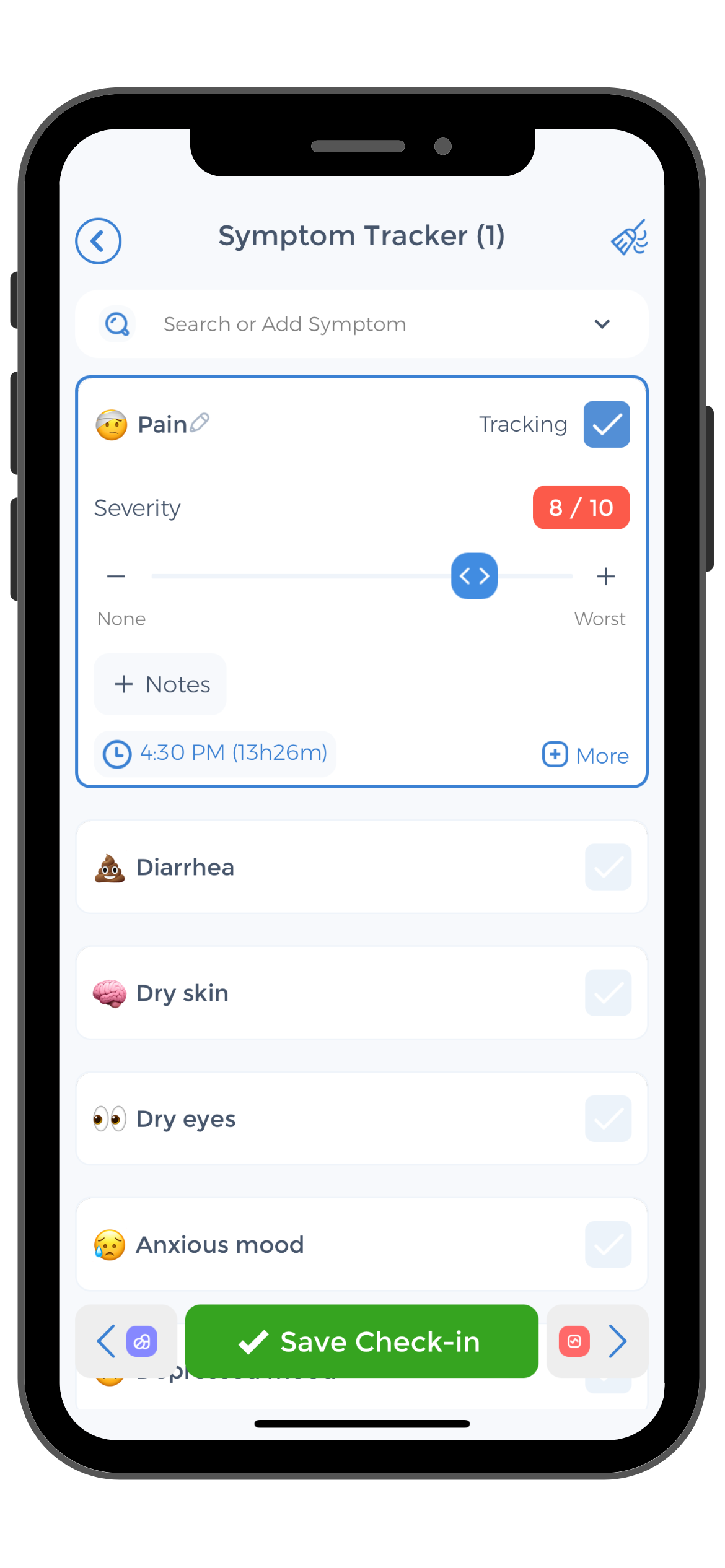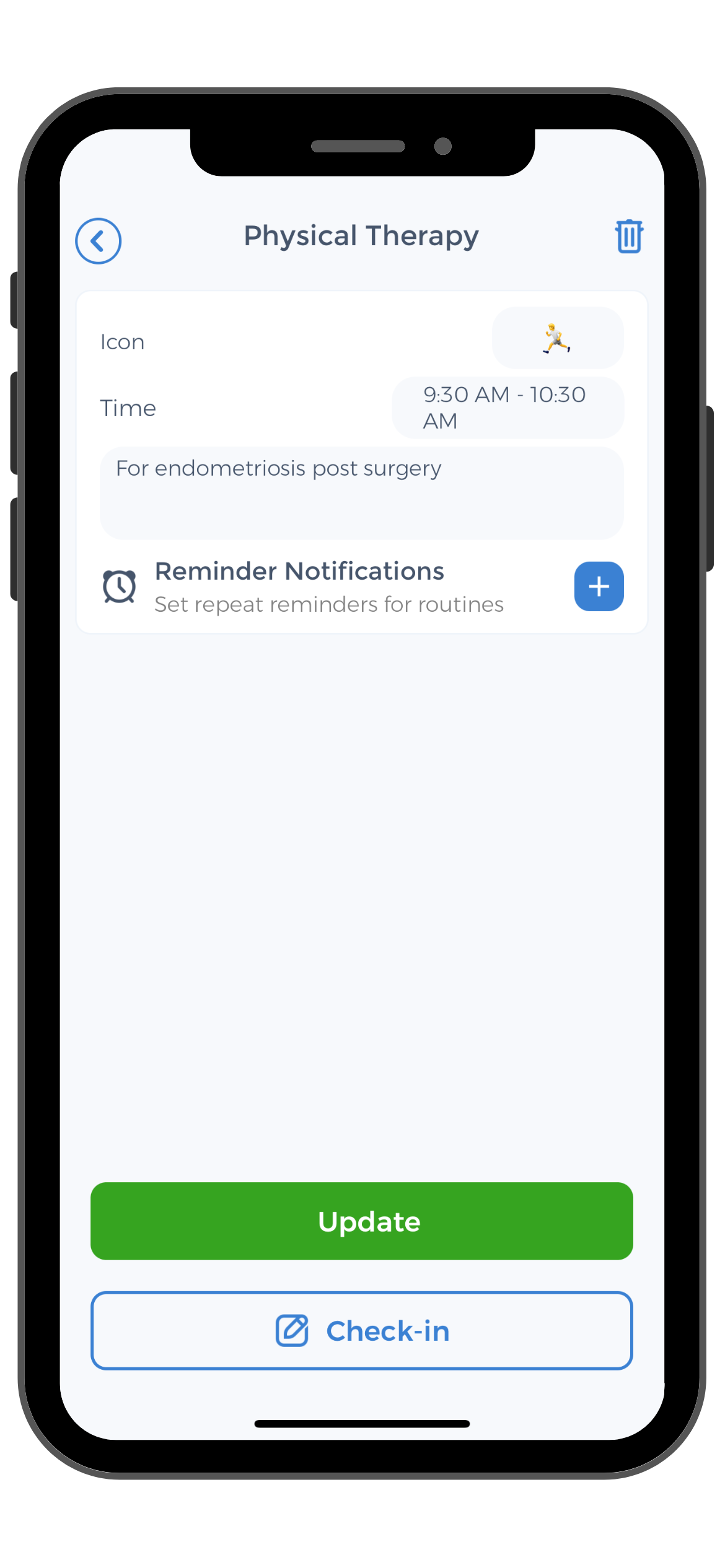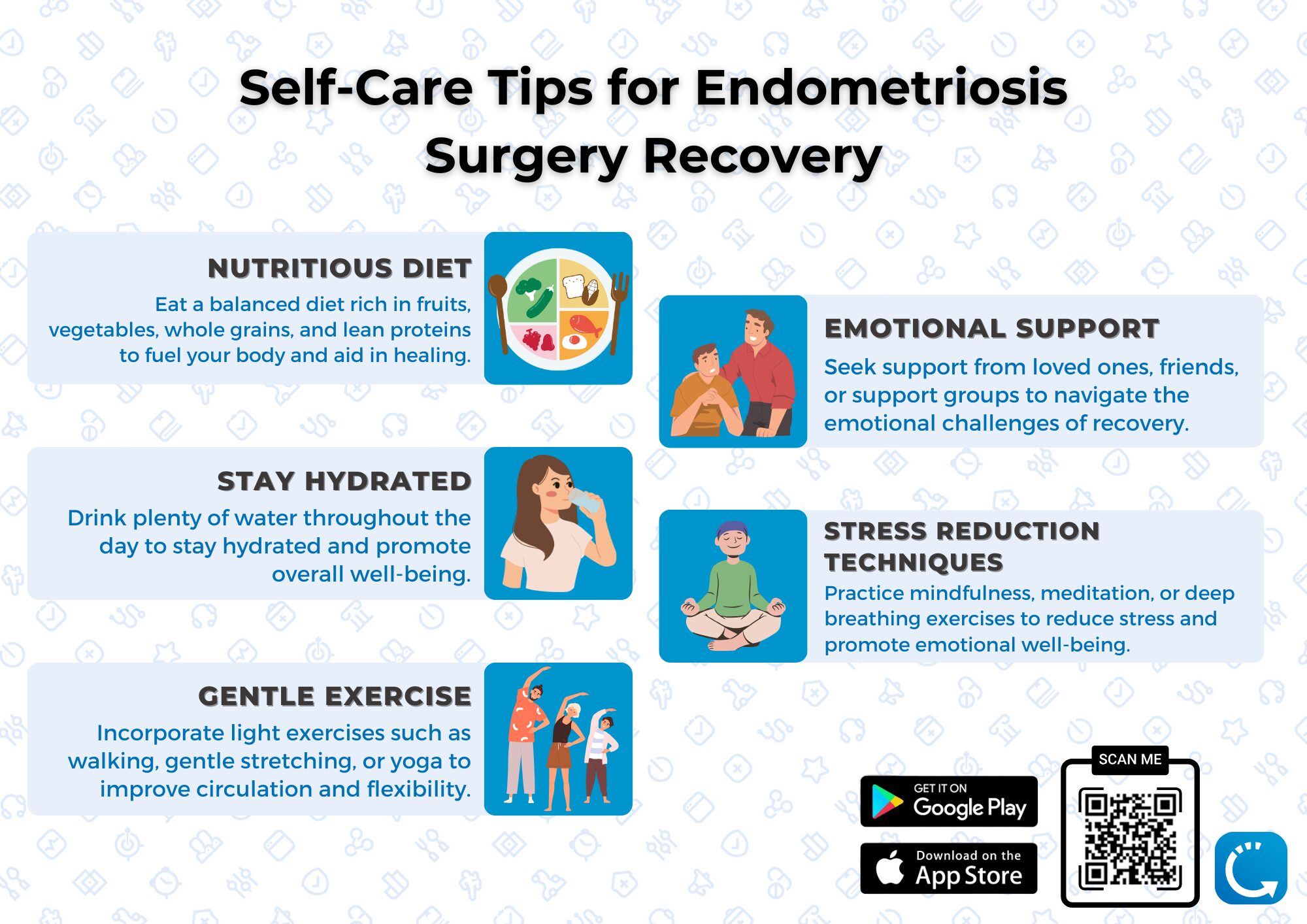
In this comprehensive article, we will walk you through every aspect of your endometriosis surgery recovery journey, providing you with valuable insights, practical tips, and expert advice. Whether you have recently undergone endometriosis surgery or are preparing for one, this guide will equip you with the knowledge and tools you need to successfully navigate the recovery process.[1][2][3][4]
Understanding Endometriosis and Its Impact
Before delving into the specifics of recovery, let’s start by understanding what endometriosis is and how it can affect your life. Endometriosis is a chronic condition in which the tissue that normally lines the uterus grows outside of it. This can lead to a range of symptoms, including pelvic pain, painful periods, and infertility.
Diagnosing endometriosis can sometimes be challenging, as the symptoms vary from person to person. If you suspect you may have endometriosis, it is crucial to consult with a healthcare professional or doctor who can perform the necessary tests and provide an accurate diagnosis.
What is Endometriosis?
Endometriosis is a condition in which the tissue that lines the uterus, known as the endometrium, grows outside of it. This can occur in various areas of the body, including the ovaries, fallopian tubes, and the lining of the pelvis. The misplaced tissue responds to hormonal changes in the same way as the tissue inside the uterus, leading to inflammation, scarring, and the formation of adhesions. These adhesions can cause pain and discomfort, and in severe cases, they can even interfere with fertility.
Symptoms and Diagnosis of Endometriosis
 The endometriosis symptoms can vary from mild to severe, and they can significantly impact your quality of life. Common symptoms include pelvic pain, especially during menstruation, pain during intercourse, and infertility. Other symptoms may include heavy or irregular periods, digestive issues, and fatigue.
The endometriosis symptoms can vary from mild to severe, and they can significantly impact your quality of life. Common symptoms include pelvic pain, especially during menstruation, pain during intercourse, and infertility. Other symptoms may include heavy or irregular periods, digestive issues, and fatigue.
Diagnosing endometriosis often involves a combination of medical history assessment, physical examination, and imaging tests. In some cases, a laparoscopic procedure may be necessary to confirm the diagnosis and evaluate the extent of the disease. If you suspect you may have endometriosis, it is important to consult with a healthcare professional or doctor who specializes in the condition.
Living with endometriosis can be challenging, both physically and emotionally. Chronic pain and discomfort can impact your daily activities, relationships, and overall well-being. It is important to seek support from loved ones and healthcare professionals who understand the complexities of this condition.
Managing endometriosis requires a multidisciplinary approach, which may include pain management strategies, hormonal therapies, and in some cases, surgery. It is important to work closely with your doctor and healthcare team to develop an individualized treatment plan that addresses your specific needs and goals.
Additionally, making lifestyle changes such as maintaining a healthy diet, managing stress levels, and engaging in regular exercise can also help alleviate symptoms and improve your overall quality of life.
Remember, you are not alone in your journey with endometriosis. There are support groups, online communities, and advocacy organizations that can provide valuable resources and a sense of community. By educating yourself and seeking the support you need, you can navigate the challenges of endometriosis and live a fulfilling life.[5]
Preparing for Endometriosis Surgery
Preparing for endometriosis surgery is a crucial step in ensuring a smooth recovery process. It is important to understand the different types of endometriosis surgery and make necessary arrangements to optimize your physical and mental well-being before the procedure.
Different Types of Endometriosis Surgery
There are several surgical options available to treat endometriosis, depending on the severity of the disease and your individual circumstances. The most common types of surgery include laparoscopy, which is a minimally invasive procedure, and laparotomy, which is a more extensive surgery involving a larger incision.
- Laparoscopy Surgery: Laparoscopic surgery is the most common surgical approach for the treatment of endometriosis. It involves making small incisions in the abdomen and inserting a thin, lighted tube called a laparoscope. This allows the surgeon to visualize and remove endometriosis lesions, adhesions, and cysts.
- Laparotomy Surgery: Laparotomy is a more invasive surgical procedure used to treat severe endometriosis. It involves making a larger incision in the abdomen to access and remove endometriosis lesions and perform any necessary repairs.
Pre-Surgery Checklist
In the weeks leading up to your surgery, it is important to take certain steps to prepare yourself physically and mentally for the procedure. Here is a pre-surgery checklist to help you stay organized:
- Consult with your doctor and healthcare team: Schedule a pre-operative appointment with your healthcare team to discuss the surgery in detail, ask any questions you may have, and address any concerns.
- Follow pre-operative instructions: Follow any pre-operative instructions provided by your healthcare team, such as fasting guidelines and medication restrictions.
- Arrange for support: Reach out to friends or family members who can help support you during your recovery period. Having someone to assist with household chores, meal preparation, and transportation can greatly reduce stress and promote healing.
- Prepare your home: Make your home recovery-friendly by organizing essential items within easy reach, setting up a comfortable resting area, and ensuring a clean and clutter-free environment.
- Create a self-care plan: Prioritize self-care activities, such as relaxation exercises, mindful meditation, and gentle stretching, to promote emotional well-being and aid in your recovery.
The Surgery Process
Now that you have a better understanding of endometriosis and have completed the necessary preparations, let’s explore what to expect during the surgical procedure itself and the immediate aftercare.
What to Expect During Surgery
 On the day of your surgery, you will be admitted to the hospital or surgical center and will undergo a pre-operative evaluation. This evaluation typically includes vital signs measurement, administration of intravenous fluids and medication, and a final consultation with your surgeon.
On the day of your surgery, you will be admitted to the hospital or surgical center and will undergo a pre-operative evaluation. This evaluation typically includes vital signs measurement, administration of intravenous fluids and medication, and a final consultation with your surgeon.
During the surgery, you will be placed under general anesthesia, ensuring that you are comfortable and unaware of the procedure. The surgeon will then make the necessary incisions and perform the planned surgical interventions, such as excising endometriosis lesions, removing adhesions, or repairing any affected organs.
The length of the surgery will depend on various factors, including the complexity of your case and the extent of the disease. Once the procedure is complete, you will be transferred to a recovery area, where you will gradually wake up from anesthesia under the careful supervision of the medical team.
Post-Surgery: Immediate Aftercare
After the surgery, you will be closely monitored in the recovery area until you have regained consciousness and your vital signs are stable. Your medical team will provide pain management and ensure that you are comfortable as you transition into the post-op phase.
During this time, it is common feel pain, swelling, and discomfort at the surgical site. You may also feel groggy from the effects of anesthesia. Remember that every individual’s recovery experience is unique, and it is essential to communicate any concerns or symptoms to your healthcare team proactively.
To promote a smooth recovery, it is important to follow your healthcare team’s instructions regarding activity levels, pain management, and wound care. This may include taking prescribed medications as directed, practicing gentle walking to prevent blood clots, and avoiding strenuous activities for a certain period.[6][7]
The Recovery Journey
The recovery time journey following endometriosis surgery is a crucial time for physical healing and emotional well-being. Let’s explore the different aspects of the recovery time process and how you can take an active role in your own self-care.
Physical Recovery from Endometriosis Surgery
Physical recovery after endometriosis surgery varies for each person, but generally, it takes several weeks to months to fully heal. During this time, it is important to prioritize self-care and engage in activities that promote healing.
Here are some key tips for physical recovery:
- Follow your surgeon’s post-operative instructions: Your surgeon will provide specific guidelines for wound care, activity levels, and restrictions. It is crucial to adhere to these instructions to ensure proper healing and minimize the risk of complications.
- Maintain a nutritious diet: Eating a balanced diet that includes fruits, vegetables, whole grains, and lean proteins can support your body’s healing process and provide essential nutrients.
- Stay hydrated: Drinking an adequate amount of water can help prevent constipation, promote healing, and support overall well-being.
- Engage in gentle exercise: As you progress in your recovery, gradually incorporate light exercise, such as walking or gentle stretching, into your routine. Consult with your healthcare team before starting any exercise regimen.
- Practice good sleep hygiene: Adequate sleep is essential for overall well-being and healing. Create a restful sleep environment, establish a regular sleep schedule, and practice relaxation techniques before bedtime to promote restful sleep.
Emotional Recovery and Mental Health
Endometriosis surgery can have a significant impact on your emotional well-being. It is normal to experience a range of emotions during the recovery process, including anxiety, sadness, and frustration. Taking care of your mental health is just as important as taking care of your physical health.
Here are some strategies to support your emotional well-being:
- Seek emotional support: Reach out to friends, family members, or support groups who can provide understanding and empathy during your recovery journey.
- Practice stress-reduction techniques: Engage in activities that help you relax and reduce stress, such as deep breathing exercises, meditation, or engaging with hobbies that bring you joy.
- Consider counseling or therapy: If you find it challenging to cope with the emotional challenges of recovery, seeking professional help from a therapist or counselor can provide valuable support and guidance.
- Utilize self-care tools: Incorporate self-care activities into your daily routine, such as taking warm baths, practicing mindfulness, or indulging in hobbies that promote relaxation and self-expression.
Managing Pain and Discomfort Post-Surgery
Pain and discomfort are common after endometriosis surgery or major abdominal surgery. Effective pain management is crucial to promote healing, improve well-being, and enhance your overall recovery experience.
Severe Pain Medications and Management
Your healthcare team will likely prescribe pain medication to help manage post-operative discomfort. It is important to take the prescribed medication as directed and communicate with your healthcare team if you experience any side effects or have concerns about pain management.
In addition to medication, there are other strategies you can incorporate to manage pain and discomfort:
- Apply heat or cold therapy: Applying a heating pad or using ice packs can help alleviate pain and reduce inflammation. Follow your healthcare team’s recommendations for safe and effective use.
- Engage in relaxation techniques: Relaxation exercises, such as deep breathing and guided imagery, can help reduce muscle tension and promote a sense of calm.
- Try complementary therapies: Some individuals find relief from pain through techniques such as acupuncture, acupressure, or herbal remedies. Consult with a qualified healthcare professional before trying any complementary therapies.
Physical Therapy and Rehabilitation
 In some cases, your healthcare team may recommend physical therapy or rehabilitation to aid in your recovery from endometriosis surgery. Physical therapy can help improve range of motion, reduce scar tissue formation, and restore strength and function in affected areas.
In some cases, your healthcare team may recommend physical therapy or rehabilitation to aid in your recovery from endometriosis surgery. Physical therapy can help improve range of motion, reduce scar tissue formation, and restore strength and function in affected areas.
If your healthcare team recommends physical therapy, it is important to diligently attend sessions and follow your therapist’s guidance for exercises and rehabilitation techniques. Remember to communicate any concerns or limitations to your therapist, as they can tailor the program to meet your individual needs.
The journey to recovery after endometriosis surgery is an important phase in your overall well-being. By understanding the condition, preparing for surgery, and actively engaging in self-care, you can optimize your healing process. Remember to consult with your healthcare team for personalized advice and guidance, and take each step of the recovery journey at your own pace. With the right support and resources, you can navigate this journey with confidence and emerge stronger, healthier, and more resilient.
References
- “Jo's Hot Topics: Recovering from Surgery | Endometriosis UK”. https://www.endometriosis-uk.org/jos-hot-topics-recovering-surgery
- “Top 5 tips for your endometriosis post-op recovery at home – Endometriosis Australia”. https://endometriosisaustralia.org/top-5-tips-for-your-endometriosis-post-op-recovery-at-home/
- “After Endometriosis Surgery – Seckin Endometriosis Center”. https://drseckin.com/after-endometriosis-surgery/
- “Endometriosis Surgery: Procedures, Recovery & Results”. https://my.clevelandclinic.org/health/treatments/4620-endometriosis-surgery
- “Endometriosis: Causes, Symptoms, Diagnosis & Treatment”. https://my.clevelandclinic.org/health/diseases/10857-endometriosis
- “Steps of Laparoscopic Endometriosis Surgery – New York Gynecology Endometriosis”. https://nygendometriosis.com/steps-of-laparoscopic-endometriosis-surgery/
- “Endometriosis: recovering from surgery | Spire Healthcare”. https://www.spirehealthcare.com/health-hub/specialties/womens-health/endometriosis-recovering-from-surgery/
- “How Long Does It Take to Recover From Endometriosis Surgery? | Riverwalk OBGYN”. https://riverwalkobgyn.com/how-long-does-it-take-to-recover-from-endometriosis-surgery/
- “Endometriosis Operation Recovery: Tips & Timeline – Acibadem Health Point – ACIBADEM Hospitals – Acibadem Health Group”. https://www.acibademhealthpoint.com/endometriosis-operation-recovery-tips-timeline/
- “Effectiveness of smartphone app-based interventions after surgery on quality of recovery among cancer patients: a systematic review and meta-analysis – PubMed”. https://pubmed.ncbi.nlm.nih.gov/39140390/



